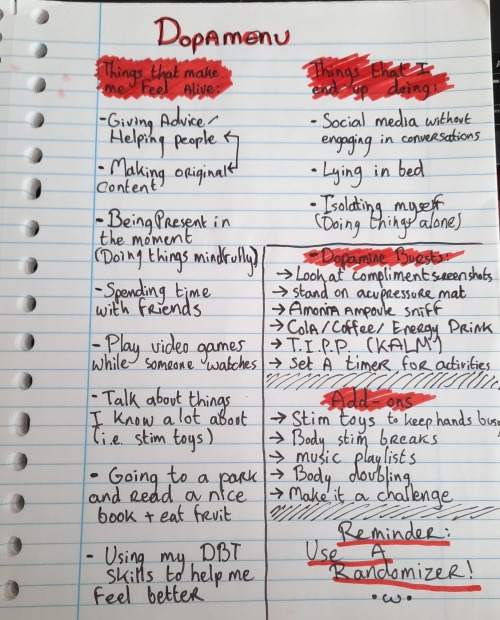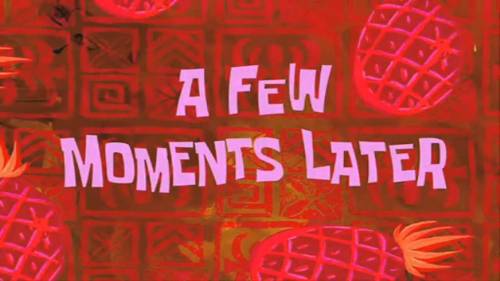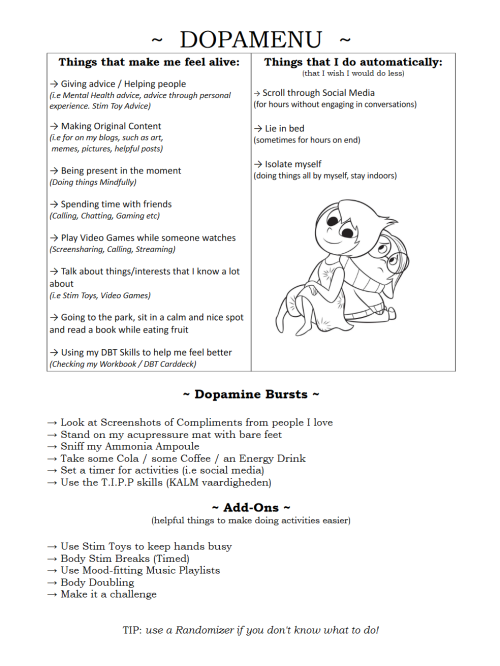Please Dont Use Spoon Theory Terms Unless You Have Physical Disabilities / Chronic Pain/illness. The
please dont use spoon theory terms unless you have physical disabilities / chronic pain/illness. the woman who came up with it used it as a metaphor for what it’s like to live with lupus, and as far as I know it’s not applicable to people who do not have physical disabilities or chronic pain/illness. if you do then carry on but otherwise please don’t.
shit, sorry, didn't know. that's my bad, i'll edit or delete my last stuff that used it. sorry!!
More Posts from Bipolaruchiha and Others
Some rando: You should think about stopping your prescription
Me: My pills make me not want to die tho
They: You shouldn’t want to die, that’s not normal
Me: Yeah that’s why I’m taking my pills
i talk a lot of shit for someone who has to take 6 pills a day so they dont blow their brains out
I'm in a support group for queer adults with disabilities (before I joined i didn't even know there *were* groups for that overlap, it's amazing and I love it) and we had our digital meeting on Monday. I shared your most recent flag update, where you had moved the new version to the public domain. Especially since we were talking about the ADA and its anniversary, it was very fitting. Everyone really liked it! Several people commented about the symbolism, in particular. So, just letting you know of some responses from outside tumblr. Thank you for putting it out there!
Thank you!
(Confession: At the time you first sent me this ask, the new version of the flag was not yet in the Public Domain. But it is, now! 🏴🎇🏴)
Shamelessly plugging the new version, again – especially since I want it to eclipse the old one:


To the extent possible under law, Ann Magill has waived all copyright and related or neighboring rights to Visually Safe Disability Pride Flag. This work is published from: United States.
And for those who want detailed ‘specs’:
The ratio of overall breadth to overall length is 3 to 4. The ratio of the flag’s overall length to the width of each stripe is 10 to 1 (So the ratio of the overall length to the width of the combined stripes is 2 to 1).
The Hexadecimal codes for each of the colors are:
The Field: #585858
The Red: #CF7280
The Yellow: #EEDF77
The White: #E9E9E9
The Blue: #7AC1E0
The Green: #3AAF7D
Now, as to the symbolism: in the original flag, the zigzags were meant to represent “navigating around barriers.” But instead, they were the barrier – so they were removed.
So let me put the story of the new symbolism into words – here and now– and thereby bring it into being:
The Black, as it was from the beginning, represents rage and mourning for those who’ve suffered violence and abuse because of their disabilities.
The five colors, in order from left to right, represent bodily disability, neurodivergent disabilities, invisible and/or undiagnosed disabilities (always in the center, because any disability can be invisible at any time), mental illness/emotional disabilities, and sensory disabilities.
The colored band starts at the top of the hoist, which is a starting place of honor, and ends at the fly, which represents moving outward into the world.
Walls and locked doors (behind which Disabled People have been hidden for too long) are right angles, and square. And so the colored band is a diagonal that cuts across those right angles, in defiance.
The five stripes are parallel, to represent our solidarity.
There! How’s that?
Just saw a spicy hot take in the notes of an ADHD post that was like “adhd isn’t a mood disorder stop making excuses” from a supposed fellow ADHD person and like yes, ADHD is not exclusively a mood disorder. It’s 4 of them hiding under a trench coat with 15 other neurological disorders. And also:


ID, a screen grab from an article that reads: About 70 percent of adults with ADHD report problems with emotional dysregulation, going up to 80 percent in children with ADHD. In clinical terms, these problem areas include:
-Irritability: issues with anger dysregulation – “tantrum” episodes as well as chronic or generally negative feelings in between episodes.
-Lability: frequent, reactive mood changes during the day.
-Recognition: the ability to accurately recognize other people’s feelings. Individuals with ADHD may tend to not notice other people’s emotions until pointed out.
-Affective intensity: felt intensity – how strongly an emotion is experienced. People with ADHD tend to feel emotions very intensely.
-Emotional dysregulation: global difficulty adapting emotional intensity or state to situation.
/end ID. (Source)
Like not to be wildly and irrationally peeved about this, but bully for you if you don’t experience this as part of your ADHD, but over 70% of us do and saying we’re making excuses or not trying hard enough is the exact same shit neurotypicals say to invalidate us, and causes us real harm. Please don’t do the same thing. Trauma inflicted by neurotypicals is a huge part of why living with ADHD is so difficult. We don’t need it from within our own community too.
We all experience this shit show disorder differently. It’s a spectrum of one size fits no one, not a cookie cutter mold to fit into.
And yeah, you know what, this shit isn’t an excuse to behave badly, but you know what, knowing emotional dysregulation is a symptom of ADHD helps you to treat it and work on getting a handle on it. Knowing the reason it feels like the world is ending in your chest because something bad happened, and knowing it’s because your gremlin brain is perpetually starved for dopamine so there’s no cushion for the raw emotional feedback currently happening can help you, with practice, to curb the impulsive desire to do something rash or harmful.
I mean, fuck, there’s a reason for why suicide is so prevalent in ADHD, and I’m going to go out on a limb and say that impulsivity and severe emotional dysregulation is a part of that.
Knowing that the feeling will end and isn’t an accurate reflection of the situation, overwhelmingly painful as it is in the moment, can help. It does help. So denying this aspect as part of ADHD? Not helpful, and you need to take some time to sit with your thoughts and see why you want to distance yourself so much from this to the point of invalidating others.
I see this a lot in leftist circles but mental illness, trauma and abuse will exist with or without capitalism, your “mental illness is a social phenomenon” might be true for your depression and your anxiety but I beg all of you to think about psychotic people, systems and people with personality disorders when you make posts like that. It might be true that we wouldn’t be labeled as mentally ill but we would still need resources to help us cope, there’s still something we would need help coping with and you should focus on making that help available and accessible and free of bigotry for all of us instead of living in a “no mentally ill people” pseudo progressive eugenicist dream.
For anyone wondering what the difference between type 1 and type 2 bipolar disorder (BP-II), this graphic is really nice. For the record, I’m type 2.

Unipolar Major Depression is also known as Major Depression Disorder. Another Graphic that helps compare the two, and provides references for normal moods, bereavement depression (after a loss of a loved one, for example,) and Cyclothymia:

Other facts about BP-II:
Bipolar Type 2 Patients do not receive full manic episodes, which means they will not exhibit the psychotic symptoms such as delusions and hallucinations associated with Manic episodes in BP-I patients.
Bipolar Type 2 patients are more likely to commit suicide than their Type 1 counterparts
Those with bipolar type 2 cycle from Hypomania to Severe Depression more frequently than Type 1 does from Mania to Severe depression
BP-II are more likely to experience rapid cycling than Type 1
BP-II patients typically experience longer depressive episodes than their Type 1 counterparts.




Are you having a hard time keeping yourself and your brain stimulated? Can you even stimulate yourself at all? Maybe you should try making a Dopamenu!
I made a Dopamenu today by following How To ADHD’s guide.
How To Give Your Brain The Stimulation It Needs (Dopamenu Guide!)
I recommend watching the video and trying to make yourself a Dopamenu as well. I used OpenOffice to make my Dopamenu, it’s a free alternative to Word and it works pretty much the same!
LINK TO MY GOOGLE DRIVE SO YOU CAN GET THE FILE & FILL IN YOUR OWN DOPAMENU YOURSELF
I have trouble taking care of my teeth because everything that involves doing that is a sensory nightmare. I decide to do some research to see if there's anything I can do about this. The results?
"How to make your autistic child brush their teeth"
"Autistic Children and Sensory issues relating to tooth brushing"
"How to get your little shit to brush his fucking teeth"
Like, yeah Google, thanks, that really helps. And like, even if I was a child, some of the advice seemed... unhelpful. Like, doing a dance and singing a song while brushing your teeth? Even for a kid, I don't think that would help distract from a sensory experience as intense as brushing your teeth. Like, the extremely intense and unpleasant flavor, the intense feeling of the brush against your teeth scraping across it, even mouthwash has such an intense and disgusting flavor that I have difficulty keeping it in my mouth for more than a few seconds. I wish there was SOMETHING that could be done.
-
 quillsink liked this · 3 years ago
quillsink liked this · 3 years ago -
 samaspic31 liked this · 3 years ago
samaspic31 liked this · 3 years ago -
 sagehasbrainrot liked this · 3 years ago
sagehasbrainrot liked this · 3 years ago -
 gay-runner-nerd-boy liked this · 3 years ago
gay-runner-nerd-boy liked this · 3 years ago -
 bipolaruchiha reblogged this · 3 years ago
bipolaruchiha reblogged this · 3 years ago -
 martian-marco reblogged this · 3 years ago
martian-marco reblogged this · 3 years ago -
 unrulygingerlesbian reblogged this · 3 years ago
unrulygingerlesbian reblogged this · 3 years ago -
 roanawayspoons reblogged this · 3 years ago
roanawayspoons reblogged this · 3 years ago -
 roanawayspoons liked this · 3 years ago
roanawayspoons liked this · 3 years ago -
 angelrainbowdreamer liked this · 3 years ago
angelrainbowdreamer liked this · 3 years ago -
 goodbyedeclaration reblogged this · 3 years ago
goodbyedeclaration reblogged this · 3 years ago -
 annoyingalchemist liked this · 3 years ago
annoyingalchemist liked this · 3 years ago -
 i-love-you-very-much reblogged this · 3 years ago
i-love-you-very-much reblogged this · 3 years ago -
 steven-cartoons liked this · 3 years ago
steven-cartoons liked this · 3 years ago -
 scarred-but-still-smiling liked this · 3 years ago
scarred-but-still-smiling liked this · 3 years ago -
 lord-magpie liked this · 3 years ago
lord-magpie liked this · 3 years ago -
 i-love-you-very-much liked this · 3 years ago
i-love-you-very-much liked this · 3 years ago
